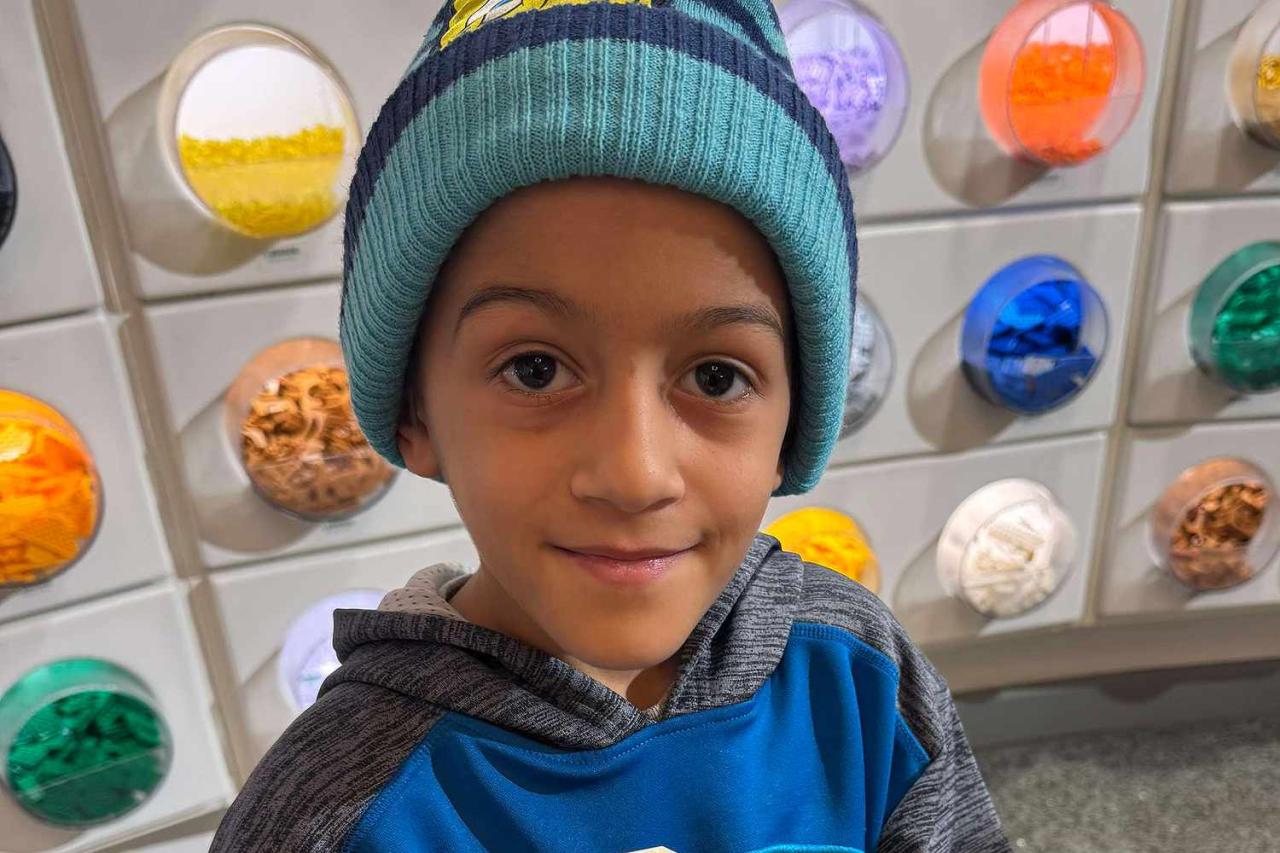Boy hit by drone – this chilling scenario highlights the urgent need for improved drone safety regulations and public awareness. Imagine a sunny afternoon: a child playing in a park, unaware of the potential danger overhead. Suddenly, a drone, perhaps malfunctioning or mishandled, descends, causing injury. This article explores the various aspects of such a devastating event, from the immediate impact and resulting injuries to the long-term legal and ethical implications.
We’ll delve into the potential causes of such accidents, examining different drone types and sizes, and detailing the range of injuries a child might sustain, from minor scrapes to life-threatening trauma. We’ll also examine existing drone safety regulations, legal liabilities, and explore technological advancements aimed at preventing similar incidents. Finally, we’ll discuss crucial public awareness campaigns and emergency response protocols.
A Boy Hit by a Drone: Understanding the Risks and Implementing Safety Measures
The increasing popularity of drones presents both exciting possibilities and unforeseen risks. One particularly concerning scenario is the accidental injury of a person, especially a child, by a falling or colliding drone. This article explores the various facets of such an incident, from the mechanics of the event to the legal and ethical considerations, ultimately aiming to promote safer drone operation and public awareness.
The Incident: Describing the Event

Several scenarios could lead to a boy being struck by a drone. A larger, heavier drone, such as a commercial model used for aerial photography or delivery, could cause more severe injuries if it malfunctions and falls from a significant height. Smaller drones, like hobbyist quadcopters, might inflict less severe injuries, but could still cause cuts, bruises, or eye injuries depending on the impact speed and the drone’s components.
A drone’s unexpected loss of control, due to technical failure, GPS interference, or operator error, could lead to an uncontrolled descent and collision.
Injuries sustained could range from minor scrapes and bruises to severe head trauma, broken bones, and internal bleeding, depending on the size and weight of the drone, the height of the fall, and the area of impact. Eye injuries are also a significant concern.
Imagine this: Ten-year-old Leo was playing in his backyard, kicking a soccer ball. Suddenly, a whirring sound grew louder, and a large, rectangular drone plummeted from the sky, striking him on the shoulder. The impact knocked him to the ground, and he cried out in pain. The drone, shattered into pieces, lay beside him. His mother, hearing his screams, rushed outside to find him clutching his arm, visibly shaken and in pain.
A boy getting hit by a drone is a scary thought, highlighting the potential dangers of these increasingly common devices. It makes you wonder about larger-scale incidents, like the one described in this article about a drone crash in Paris , which could easily lead to more serious consequences. Understanding these risks is crucial to ensuring responsible drone operation and preventing similar accidents involving people.
The immediate chaos involved calling emergency services and assessing the extent of his injuries.
Drone Safety Regulations and Liability

Regulations governing drone operation vary by country and region but generally restrict drone flights near populated areas, airports, and other sensitive locations. These regulations often specify maximum altitudes, operational distances, and required pilot certifications. In the case of an accident resulting in injury, the drone owner faces potential legal liability for negligence or recklessness. This liability could extend to criminal charges depending on the severity of the injuries and the circumstances of the incident.
Determining liability between the drone operator and the manufacturer is complex. If the accident resulted from a manufacturing defect, the manufacturer might bear some or all of the responsibility. However, if the accident was due to operator error, the operator would likely be held primarily liable. In the event of a legal case, the plaintiff (the injured boy’s family) would need to prove negligence on the part of either or both parties.
Hypothetical Legal Case: The family of Leo, the boy injured in the drone incident, sues both the drone operator (a local photographer) and the drone manufacturer. The plaintiff argues negligence on the part of the operator for flying the drone over a populated area without proper safety precautions, and negligence on the part of the manufacturer for a potential design flaw that led to the drone malfunction.
Technological Aspects and Prevention
Technological advancements offer significant potential to enhance drone safety. Improvements in drone design, including stronger materials and more robust fail-safe mechanisms, can reduce the risk of mid-air failures. The integration of advanced obstacle avoidance systems, utilizing sensors like lidar and radar, can help drones navigate complex environments and prevent collisions. Geofencing technology restricts drone operation within pre-defined geographical boundaries, preventing flights over populated areas.
Drone detection and avoidance systems are crucial for mitigating risks. These systems use radar, cameras, and AI to detect drones in the vicinity and alert authorities or automatically implement avoidance maneuvers. Existing technologies like ADS-B (Automatic Dependent Surveillance-Broadcast) for air traffic management can be adapted for drone traffic management.
A boy being hit by a drone is a scary thought, highlighting the potential dangers of these increasingly common devices. Incidents like this make you think about larger-scale drone mishaps, such as the recent drone crash in Paris , which thankfully didn’t involve injuries. Understanding the risks involved, both for individuals and in public spaces, is crucial to ensuring safer drone operation and preventing future accidents involving people, like the boy.
| Technology | Effectiveness | Limitations | Examples |
|---|---|---|---|
| Obstacle Avoidance Systems | High in controlled environments, variable in complex settings | Can be affected by weather, interference, and rapid changes in the environment | Lidar, radar, ultrasonic sensors |
| Geofencing | Effective in preventing unauthorized flights in restricted areas | Relies on accurate mapping and GPS signal strength | Drone software with integrated geofencing capabilities |
| Fail-Safe Mechanisms | Can mitigate the impact of malfunctions | Effectiveness depends on the type and severity of the malfunction | Emergency landing systems, automatic return-to-home functions |
Public Awareness and Education

Public awareness campaigns are essential for promoting responsible drone usage. These campaigns should educate the public about the potential risks associated with drones, particularly in populated areas. Educational materials such as brochures, videos, and online resources can explain safe operating procedures, legal regulations, and emergency response protocols.
Strategies for promoting responsible drone usage include workshops, online tutorials, and certification programs for hobbyists and professionals. Clear guidelines on drone operation near children’s play areas, schools, and other public spaces should be widely disseminated.
Public Service Announcement Script: (Scene: A child playing in a park, a drone flies overhead) Narrator: “Drones can be fun, but remember, safety first! Keep drones away from people, especially children. Responsible drone operation protects everyone.”
Emergency Response and Medical Care
In the event a child is hit by a drone, immediate emergency response is crucial. Bystanders should call emergency services immediately and assess the child’s condition. First aid should be administered as needed, prioritizing the control of bleeding, stabilization of injuries, and maintaining airway, breathing, and circulation (ABCs).
Medical interventions will depend on the severity of the injuries. This could range from simple wound cleaning and bandaging to more complex procedures like surgery for fractures or head injuries. Long-term effects could include scarring, chronic pain, and psychological trauma. Prompt medical attention can significantly influence the outcome.
Step-by-step guide for bystanders: 1. Call emergency services. 2. Assess the child’s injuries. 3.
Administer first aid as needed. 4. Keep the child calm and reassure them. 5. Cooperate with emergency responders.
Ethical Considerations and Future Implications, Boy hit by drone
The increasing use of drones raises ethical concerns about privacy, surveillance, and public safety. The potential for misuse, such as unauthorized surveillance or weaponization, necessitates careful consideration of ethical guidelines and regulations. Widespread drone adoption will impact various aspects of society, from urban planning and air traffic management to employment and leisure activities.
While drones offer significant benefits in various sectors, their increasing use also poses risks. Balancing these benefits and risks requires careful planning and regulation. Responsible innovation and public engagement are crucial for navigating the ethical and societal implications of this technology.
- Strengthen drone safety regulations and enforcement.
- Invest in advanced drone safety technologies.
- Implement comprehensive public awareness campaigns.
- Establish clear liability frameworks for drone accidents.
- Promote ethical guidelines for drone development and operation.
Final Wrap-Up: Boy Hit By Drone

The incident of a boy being hit by a drone underscores the critical need for a multi-faceted approach to drone safety. This includes stricter regulations, technological advancements in drone safety features, and widespread public education campaigns promoting responsible drone operation. By understanding the risks and implementing preventative measures, we can strive to create a safer airspace for everyone, especially our children.
The future of drone technology hinges on prioritizing safety and responsible usage, ensuring that the benefits of this technology do not come at the cost of public well-being.
Commonly Asked Questions
What types of drones pose the greatest risk?
Larger, heavier drones, especially those carrying payloads, present a significantly higher risk of causing injury in an accident.
What are the common long-term effects of drone-related injuries?
Long-term effects depend on the severity of the injury but can include scarring, chronic pain, and psychological trauma.
So, a boy got hit by a drone, right? It makes you think about drone safety, and how easily things can go wrong. Incidents like the one reported in the news, check out this article on the drone crash in Paris , highlight the potential dangers. That crash, while not involving a child, shows how crucial responsible drone operation is to prevent similar accidents, and protect people from harm like the boy who was injured.
Are there any insurance options for drone owners to cover accidents?
Yes, many drone insurance policies are available, covering liability in case of accidents causing property damage or injury.
Who is legally responsible if a drone hits someone?
Liability typically falls on the drone operator, but manufacturers could be held responsible for design defects.
